Holistic wellness and luxury living in the Himalayas

For travellers who are drawn to the Himalayas, there is a certain magic in Uttarakhand. This is a region where the landscape itself seems to invite reflection, and where the sacred Ganges flows through Rishikesh, a town known worldwide for yoga, meditation and spiritual discovery. To the visitor seeking luxury wellness, Uttarakhand offers much more than access to the Himalayan foothills and the spectacular scenery. It offers the chance to slow down, breathe, and embrace practices rooted in Indian tradition and delivered with understated luxury.
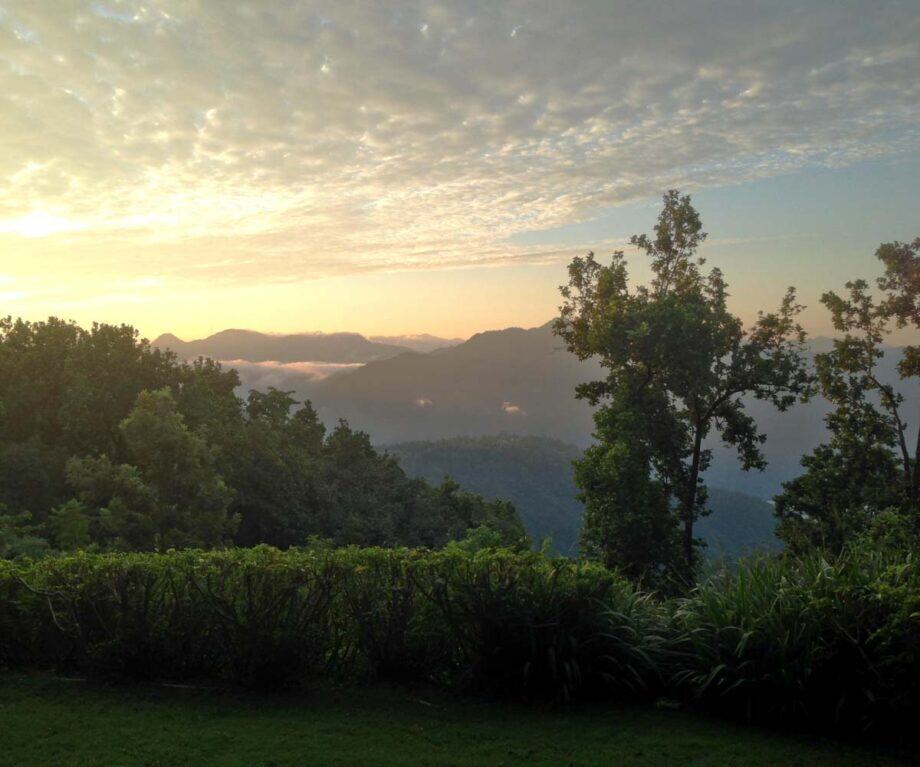
During our Indian odyssey we spent time at two of the most highly regarded retreats in the region: Six Senses Vana, a stylish and modern retreat in the forest outside Dehradun and Ananda in the Himalayas, a pioneering wellness destination set within a royal palace estate above Rishikesh. Both delivery luxurious wellness and mindful healing, yet each in their own unique way.

Six Senses Vana perfectly represents a modern vision of holistic living and luxury wellness. Located in Dehradun, just over an hour from Jolly Grant airport, the property stretches across 21 acres of forest with contemporary buildings that blend into their surroundings. At the heart of Six Senses Vana is Kila, a serene central hub where guests can enjoy peaceful contemplation before heading for meals or to their next session or treatment. The design is sleek and minimal, but manages to carry a sense of calm with natural textures and soft lighting.
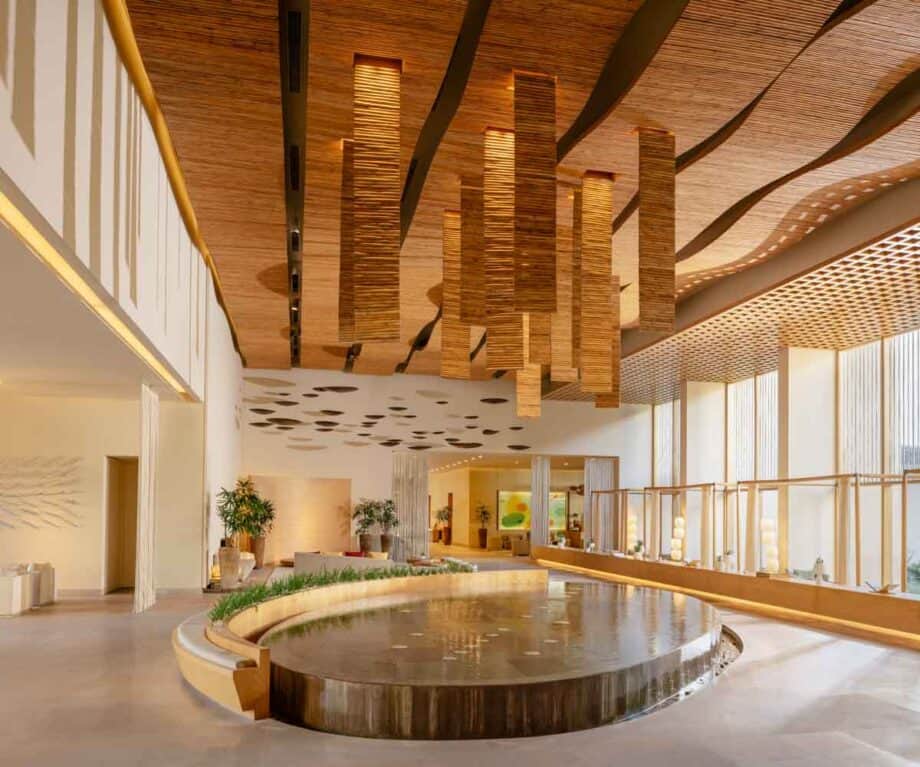
On arrival we were handed cotton kurtas, the simple tunic worn by all guests, and asked to turn off our phones in public areas. At first this was a shock as we are often glued to our screens, but very quickly the policy made total sense. Without phones mealtimes became conversations, not photo opportunities, and evenings were spent in genuine presence rather than digital distraction. The absence of technology was mirrored in the design of the rooms. Our Forest Suite had clean lines, muted tones and huge windows framing the greenery outside. The bathtub offered the same view, and the balcony became our favourite spot to sit with herbal tea and listen to the forest. Inside, the Six Senses bed was as comfortable as promised, and the room was stocked with dosha specific snacks, sorghum crackers, ragi cookies and teas that reflected the thought given to every detail.
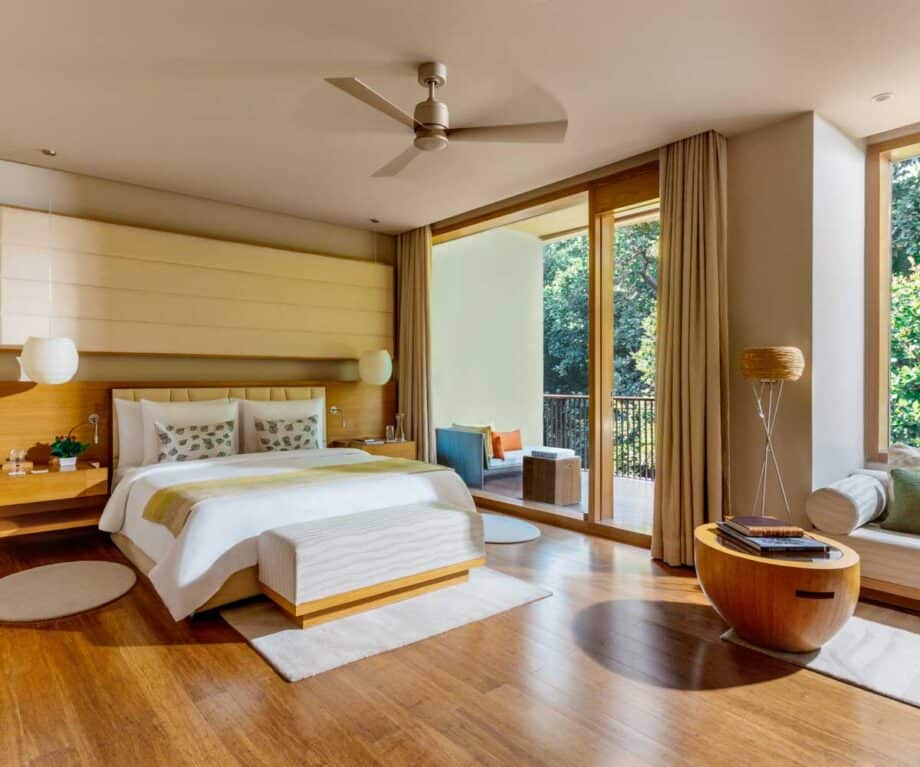
Our wellness journey at Six Senses Vana commenced with thorough consultations, where expert doctors blend traditional ancient knowledge of Ayurveda and traditional Chinese medicine with modern diagnostics. This set the tone for our treatments and activities, which included early morning yoga sessions where we developed our practice and meditation classes that carried us into deep calm. Massages were exceptional, especially a potli session where muslin bags filled with herbs were heated and pressed rhythmically along the body, leaving us both soothed and restored.

Other treatments ranged from acupuncture to Watsu (water based shiatsu) in the pool, each delivered by experts who spoke with authority but also with care. The daily rhythm at Six Senses Vana quickly became its own ritual, morning yoga, meals aligned to our programme, holistic treatments, and evenings of raga therapy or guided breathing. Unlike many luxury resorts where wellness sits on the sidelines, here it really is the heartbeat. Farah Condor, Director of Eat with Six Senses, told us, “We do not see healthy eating, wellness and sustainability individually, working in isolation, but as part of an intricately woven tapestry, intrinsically linked and working together to deliver what Six Senses is all about.” Hearing that and then living it each day, made perfect sense. The way the team combined discipline with genuine kindness gave us room to loosen our grip on old habits, notice the patterns we often ignore, and start shifting in ways that felt gentle but real.
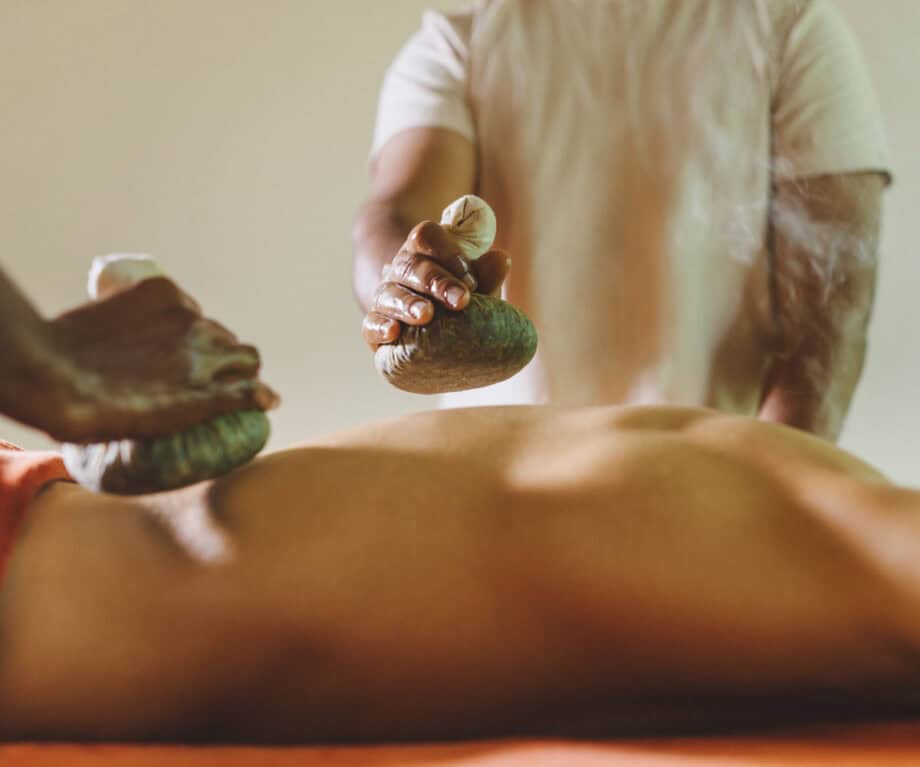
Six Senses call their food philosophy ‘Eat with Six Senses’. At Six Senses Vana we experienced what that meant in real life with simple, natural, local and seasonal ingredients cooked from scratch, with nothing unnecessary added and portion sizes that were just right and not over indulgent. Every meal felt clean, nourishing and light, yet still satisfying and delicious. It set the rhythm for our whole stay.
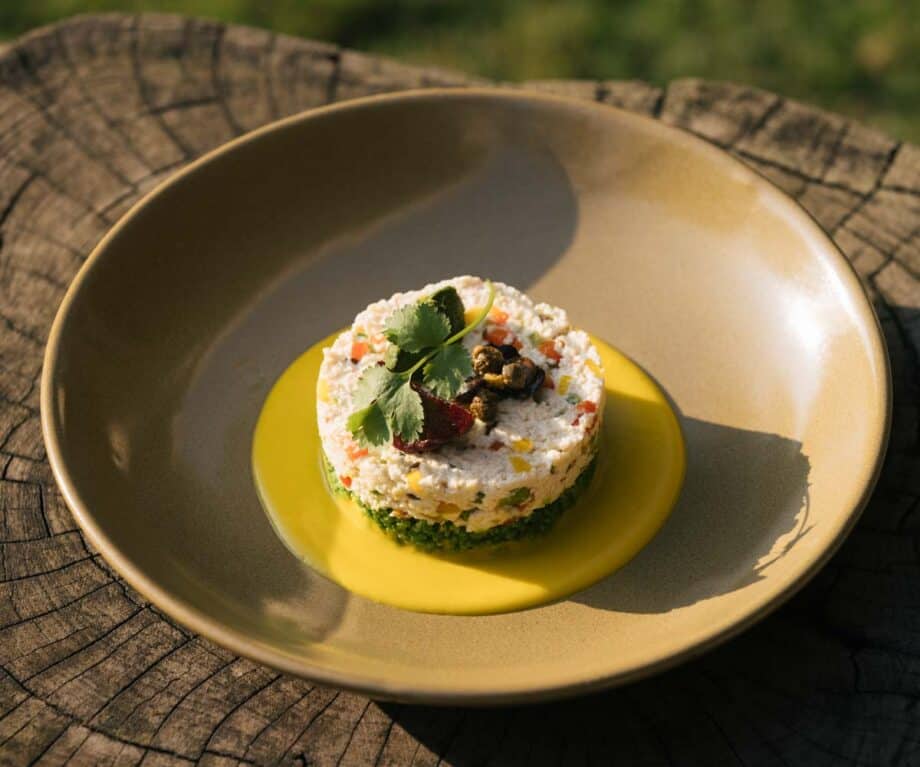
For the first time in years we did not photograph our meals due to the resort wide no phone policy, which allowed us to enjoy our food in a way that we had forgotten existed. Breakfast buffets were a revelation with beetroot granola, spirulina chia pudding, coconut yoghurt, vegan cheese, nut butters and freshly baked sourdoughs. There were herbal teas, kefirs and turmeric lattes, alongside Indian staples such as brown rice idli, ragi dosa and masala uttapam. Lunches were colourful spreads of grains, vegetables and salads dressed with fermented dressings or herbal oils, while dinners were more elaborate with thali that included tofu kebabs, dal, spiced curries and seasonal vegetables. Each meal was aligned with our consultations and adapted to our needs, making us feel cared for in ways that went beyond taste. Staff were knowledgeable, often explaining the intention behind a dish or the benefits of a spice, which made eating a process of learning as well as enjoyment.

As Farah Condor said “we believe that what the chefs design in the kitchen needs to be translated by our hosts directly to our guests. Listing the ingredients of a dish to prepare guests for what they will receive at the table is a minimal requirement.” What stood out most was that nothing felt restrictive. Plant based food here was abundant, creative and celebrated for what it is, not treated as a substitute.
Arriving at Ananda in the Himalayas is unforgettable. The drive itself is a steady climb that winds its way up from the valley below, bringing you almost a thousand metres above sea level, and just when you wonder what could possibly be waiting at the top, the gates of the Viceregal Palace come into view. The palace estate, once the residence of the Maharaja of Tehri Garhwal has been carefully restored and adapted for guests, yet still carries an aura of history and elegance. Manicured lawns slope gently towards forest edges where monkeys play in the trees, and beyond those trees, the view stretches all the way to Rishikesh and the sacred Ganges River.
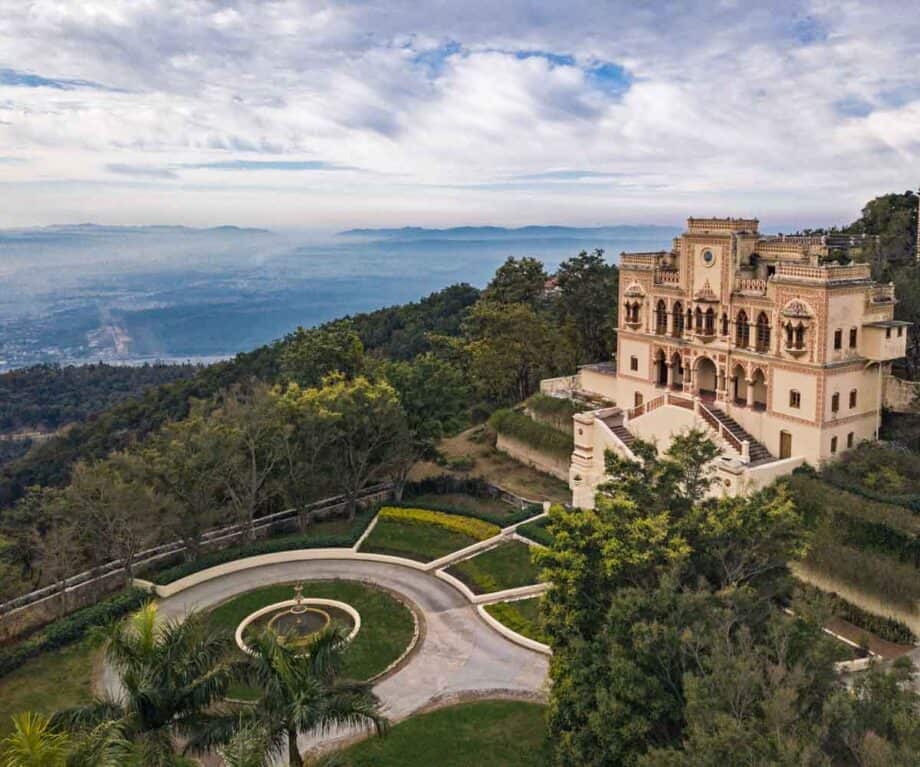
From the moment we were welcomed with a blessing ritual and herbal tea in the palace drawing room, we felt removed from the concerns of daily life and gently ushered into another way of being. Our buggy ride to the room took us past the spa buildings, yoga pavilions and the restaurant terrace, each offering a glimpse of what was to come during our retreat. This blend of history and purpose-built wellness infrastructure sets Ananda apart, giving it a sense of place that feels anchored and timeless.
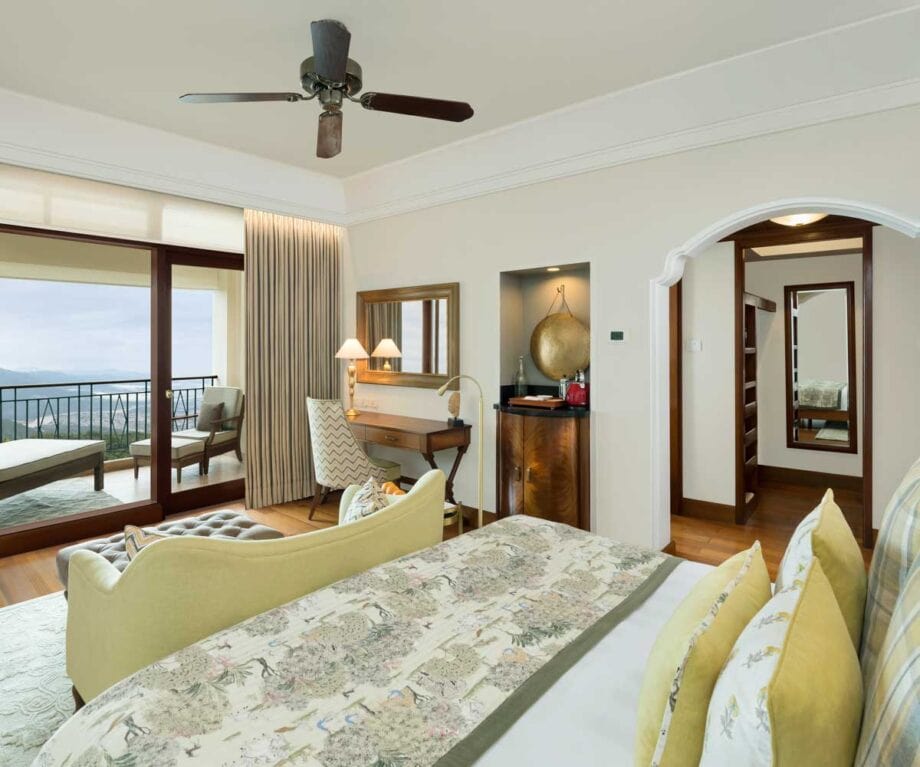
Wellness at Ananda in the Himalayas is structured but never rigid, personally shaped around detailed consultation with Ayurvedic doctors who take time to explain their reasoning and adjust your programme (and your diet) to suit your body’s needs. Our programmes included treatments such as acupuncture, cupping and reflexology, practices with deep roots in traditional Chinese medicine but used here in harmony with Ayurveda.

Acupuncture needles placed with care along meridians released tension we had carried for years, while cupping sessions left us with the tell-tale circular marks, but with a feeling of circulation restored. Daily yoga and meditation was a highlight, sometimes in the ballroom of the Viceregal Palace, and at other times outside within the marble-floored garden pagoda with the scent of the forest and the sounds of the birds in the air. The diversity of massage options at Ananda was expansive.
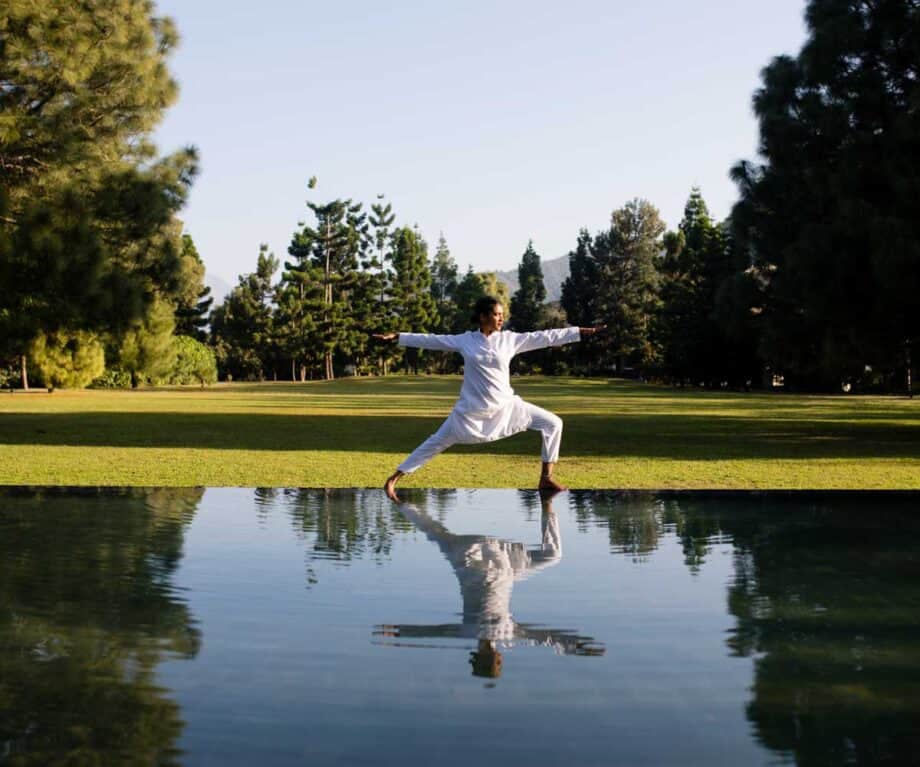
We tried the signature Ananda Touch, a flowing and gentle treatment scented with rose oil, and also a deep tissue session that pressed into layers of tight muscle until relief spread across the body. The Ananda Fusion massage was particularly memorable, using hot poultices filled with herbs together with oils blended in-house from ginger, black pepper and cardamom. Each treatment was followed by quiet time in the relaxation areas with herbal tea in hand and thoughts to process. The overall effect was not only physical restoration but a sense of mental clarity. Wellness here is both science and art, and it felt as if every specialist we met carried an expertise sharpened by years of passion and practice.
The food at Ananda in the Himalayas is a continuation of the wellness journey, prepared with thought and knowledge to compliment our constitution. After our consultations the doctors prescribed personalised menus based on our dosha, which meant one of us followed a Pitta plan while the other had their meals suited to Vata. Portions were smaller than we are used to but never left us hungry, and in fact taught us how little is needed when flavours and ingredients are balanced and nutrition is considered.
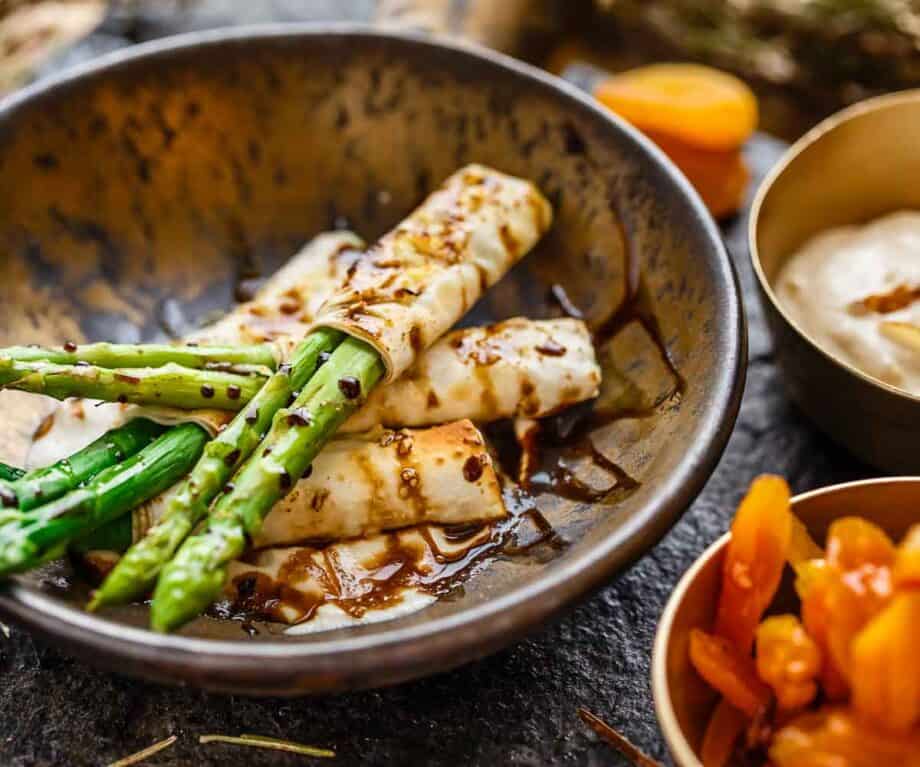
Breakfasts began with turmeric based detox teas before moving to dishes including congee with roasted broccoli or crushed wheat with peas. The masala dosas with coconut chutney and sambhar were delicious whilst bowls of amaranth porridge offered a more gentle start to the day. Lunch always featured the extraordinary salad bar where bowls of roasted vegetables, seeds, oils, salts and tofu invited you to build your own combination of colours and textures. Dinners were hearty but clean, such as casseroles made with zucchini, chickpeas and cashew cream, or roasted vegetables with chimichurri and green pea hummus. Everything was vegan, clearly labelled, and seasoned with a generous use of spices such as cinnamon, cumin and turmeric. Beyond the food, it was the attention from staff that made the meals so memorable. Chefs came out to speak with us, explain ingredients, and share knowledge in a way that felt personal rather than formal. The service team were always on hand to answer questions and assist with special requests if we wanted something either off-menu or from a previous day. Herbal teas closed each meal, including chamomile and saffron blends to aid sleep, and digestive teas with cumin, fennel and coriander after lunch. By the end of our stay we felt lighter, more energised, and genuinely inspired to continue some of these culinary practices at home.

Uttarakhand is known as one of the world’s great wellness destinations, and both of these resorts carry that reputation with grace. The foothills of the Himalayas provide a landscape that seems designed for reflection, and this majestic Indian state is the perfect location for two of India’s leading luxury wellness retreats. At Six Senses Vana we stepped into a contemporary vision of holistic living where food, treatments and silence itself worked in harmony. Whilst at Ananda in the Himalayas we were immersed in a regal setting where centuries of history meet carefully honed Ayurvedic practice. Both are leaders in their field, both offer plant based cuisine at the highest level, and both remind their guests that true luxury is not just sprawling suites and private infinity pools; but instead, wellness, time, space and care represent true luxury. For anyone seeking a retreat that is more than just a holiday, a journey into this part of the Himalayas is one that stays with you long after you return to the world outside.
aluxurytravelblog

